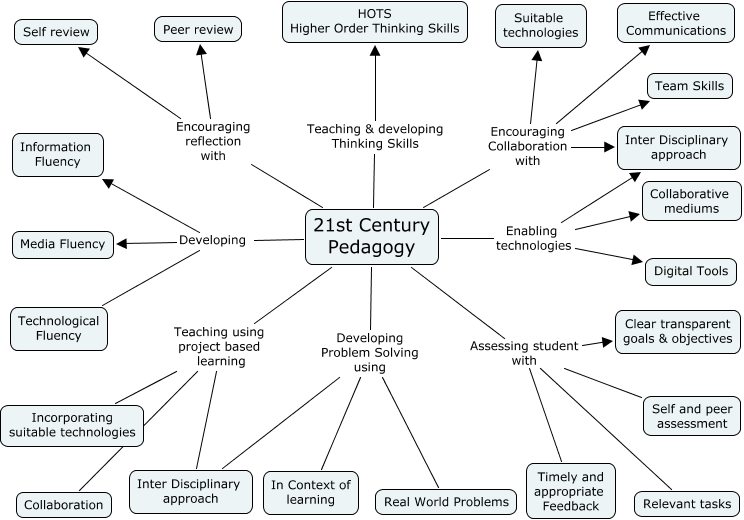A Diagram Of 21st Century Pedagogy
by TeachThought Staff
The modern learner has to sift through a lot of information.
That means higher level thinking skills like analysis and evaluation are necessary just to reduce all the noise and establish the credibility of information.
There is also the matter of utility. Evaluating information depends as much on context and circumstance as it does the nature of the data itself. The essay full of fluff may distill quite nicely down to a 140 character tweet. A trivial fact about governments may appear useless in a research paper on the 3 branches of government but could find utility in a project-based learning artifact on the evolution of government systems worldwide.
Context matters, and the diagram from edorigami below captures this, though not from the perspective of the student and content knowledge, but the teacher and various pedagogical components themselves, including Higher-Order Thinking Skills, Peer Collaboration, and Media Fluency.
(See also our framework on the 6 channels of 21st century Learning.)
Overall the diagram offers a nice framework for the concept not of 21st century learning, but 21st century pedagogy by focusing on several core components of modern learning: metacognition (reflection), critical thinking, technology, and problem and project-based learning.
